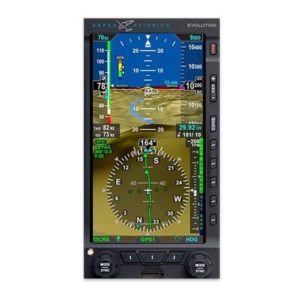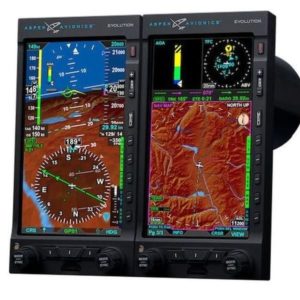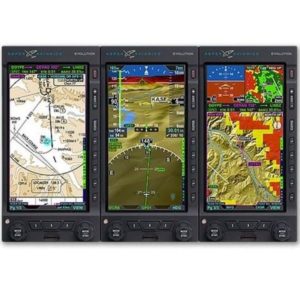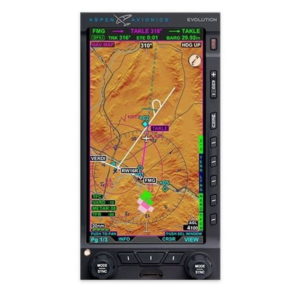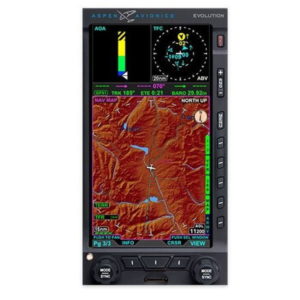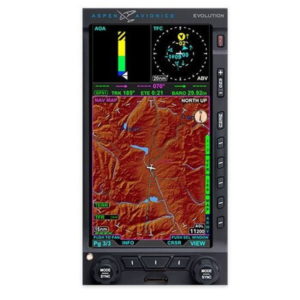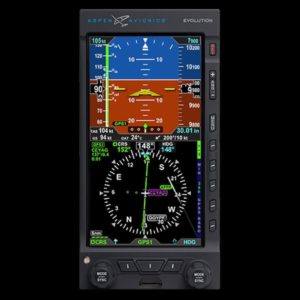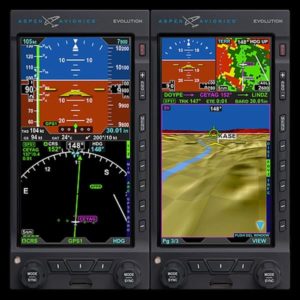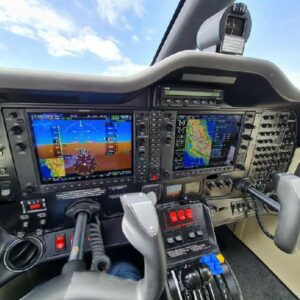No products in the cart.
Avionics
Showing 1–16 of 51 results
Filters Sort results
Reset Apply
The brand-new and affordable Evolution 1000 Pro MAX brings the latest generation of display technology and capabilities that bridge the avionics technology gap. For Aspen customers old and new, your investment retains its value, and will never be obsolete. Period. This applies to legacy primary and multi-function displays already installed. Last Updated: 31-05-2022 | ||
Evolution Pro 1000 PFD preloaded with Evolution Synthetic Vision and Angle of Attack Indicator, the most comprehensive and affordable glass safety package available. Last Updated: 31-05-2022 | ||
The Evolution™ 2000 MAX combines the powerful, award-winning Pro MAX Primary Flight Display (PFD) and the MFD1000 MAX Multi-function Display (MFD) to provide a system with MFD versatility and twice the safety and redundancy. Last Updated: 06-06-2022 | ||
The Evolution 2500 combines the Pro PFD, the 1000 MFD & a 500 MFD to provide a total system with the flexibility & convenience of dual MFS. The Evolution 2500 delivers safety & confidence of full PFD instrument redundancy. The Evolution 2500 Flight Display provides a top-of-the-line glass panel that's easy-to-use. Last Updated: 06-06-2022 | ||
The Evolution 500 MFD (Multi-Function Display) provides the same great MFD features as the 1000 MFD at a lower price by eliminating the duplicate sensor set & the ability to serve as a PFD backup. It’s a perfect MFD solution for the pilot who wants a more affordable glass panel expansion when adding on to the PFD. It’s also ideal as a third display to round out your glass cockpit six-pack replacement. Last Updated: 06-06-2022 | ||
Adding the Evolution 1000 MFD (Multi-function Display to your Aspen Primary Flight Display (PFD) doubles your display area, providing flexible display of moving maps, datalink weather, traffic, charts, geo-referenced airport airport diagrams and so much more that's brand new. Last Updated: 31-05-2022 | ||
Adding the Evolution 1000 MFD (Multi-function Display to your Aspen Primary Flight Display (PFD) doubles your display area, providing flexible display of moving maps, datalink weather, traffic, charts, geo-referenced airport airport diagrams and so much more that's brand new. Last Updated: 31-05-2022 | ||
The Evolution 1000C3 Pro PFD gives you all the major tools that help professional pilots fly safely and easily in instrument conditions, at a breakthrough price. The 1000C3 Pro features integral ADAHRS, backup battery, emergency GPS, altitude alerter – plus a whole lot more. Last Updated: 31-05-2022 | ||
Reliable, Flexible, Affordable Class III Glass Cockpit System. The Evolution 1500C3 combines the powerful 1000C3 Pro PFD with the versatile 500 MFD (Multi-function Flight Display) to deliver a full-featured, reliable, easy-to-use glass pane for Class III aircraft. Last Updated: 06-06-2022 | ||
The Evolution 2000 C3 combines the 1000C3 Pro PFD & 1000 MFD to provide a system with both MFD versatility & the safety & confidence of full PFD instrument redundancy. This Evolution Flight Display pair is an powerful combination that provides everything you need in a reliable, easy-to-use, full-featured glass cockpit for your hardworking aircraft. Last Updated: 06-06-2022 |
Avionics For Sale on AvPay
AvPay has a range of Avionics For Salein the US, Europe, Australia, South Africa and throughout the world. Contact Avionics Sellers directly on AvPay to compare prices through the Aviation Directories here: https://avpay.aero/directory/
AvPay is a global aviation marketplace that lets you browse a wide selection of Avionics For Sale. View all of our Avionics Listings and discover other related Aviation Products & Services here: https://avpay.aero/marketplace/
Can’t find the Avionics you’re looking for? Check-out the Aviation Directories to find an Aviation Company that offers the service you’re looking for: https://avpay.aero/directory/
AvPay: Connecting Pilots and Operators with Avionics Sellers Worldwide!
The difference between a glass cockpit and an analogue cockpit lies in the instrumentation and display systems used to present flight information to the pilot. An analogue cockpit, also known as a “steam gauge” cockpit, utilizes mechanical and analogue instruments to provide flight information. These instruments include analogue gauges, dials, and needles that display parameters such as airspeed, altitude, attitude (pitch and roll), heading, and engine parameters. Analog cockpits typically consist of separate/individual instruments dedicated to specific functions. Each instrument displays a single parameter, and the pilot must visually scan and interpret multiple instruments simultaneously to gather a complete picture of the aircraft’s status. Analog cockpits rely more on manual input and physical manipulation of controls by the pilot. Automation features, if present, are minimal compared to glass cockpits. A glass cockpit, also known as a digital cockpit or integrated display system, replaces the traditional analogue instruments with electronic displays. These displays are typically large, flat-panel screens that present various flight information in a more intuitive and integrated manner. In a glass cockpit, flight data is consolidated and presented on one or more displays, providing a comprehensive view of critical parameters such as airspeed, altitude, attitude, heading, navigation information, and engine data. This integration reduces the need for pilots to scan multiple instruments. Glass cockpits often incorporate advanced automation features, including autopilot systems, flight management systems (FMS), and digital navigation aids. These systems can automate certain tasks and provide enhanced situational awareness to the pilot. Glass cockpits offer more flexibility in terms of display layouts and customization options. Pilots can often personalize the way information is presented based on their preferences or the specific flight phase. Glass cockpits can integrate other aircraft systems, such as weather radar, terrain awareness and warning systems (TAWS), traffic collision avoidance systems (TCAS), and more. This integration allows for better decision-making and improved safety. The shift from analogue cockpits to glass cockpits represents a significant advancement in aviation technology, offering pilots more intuitive displays, enhanced automation, and integrated information to enhance situational awareness and flight management.







